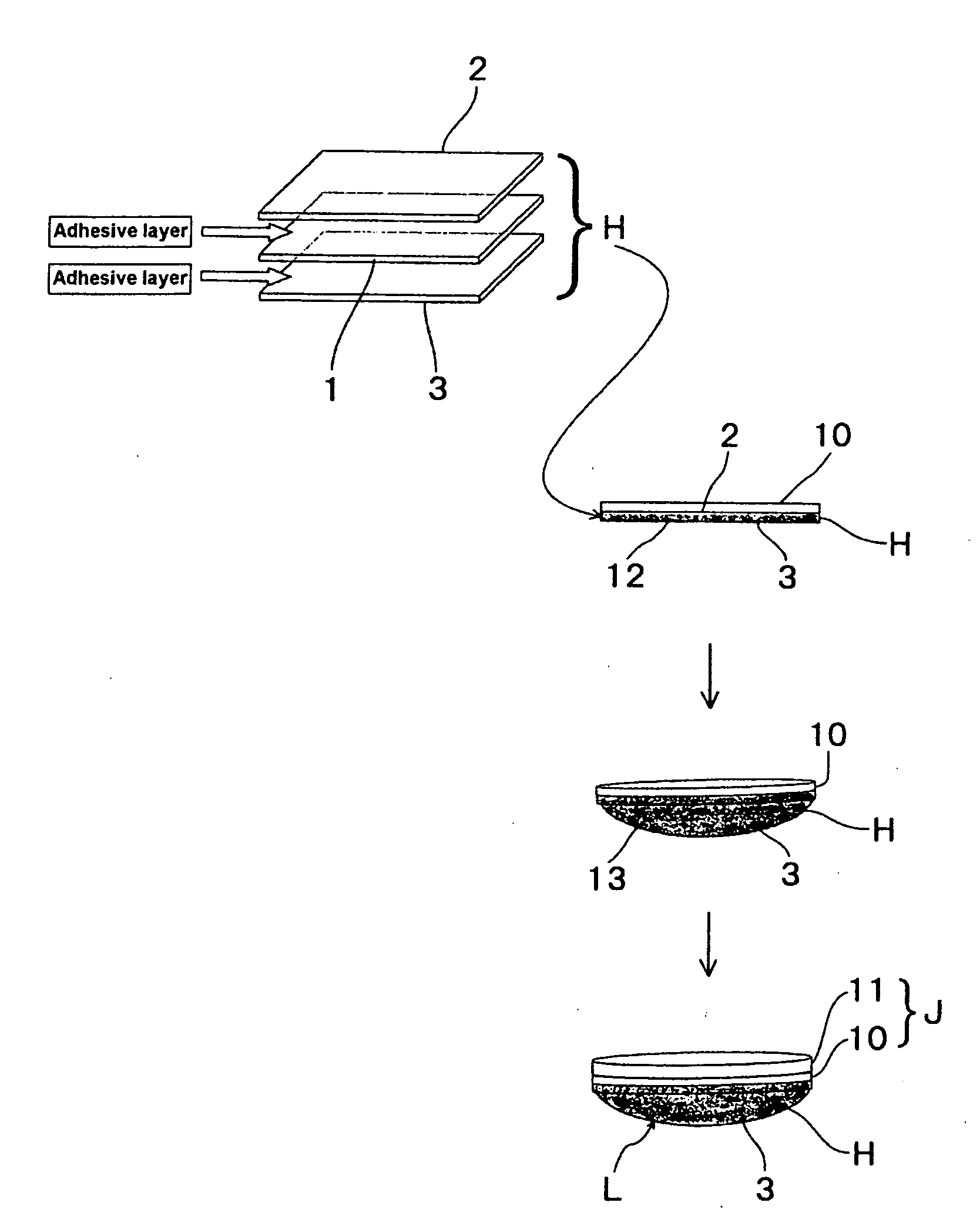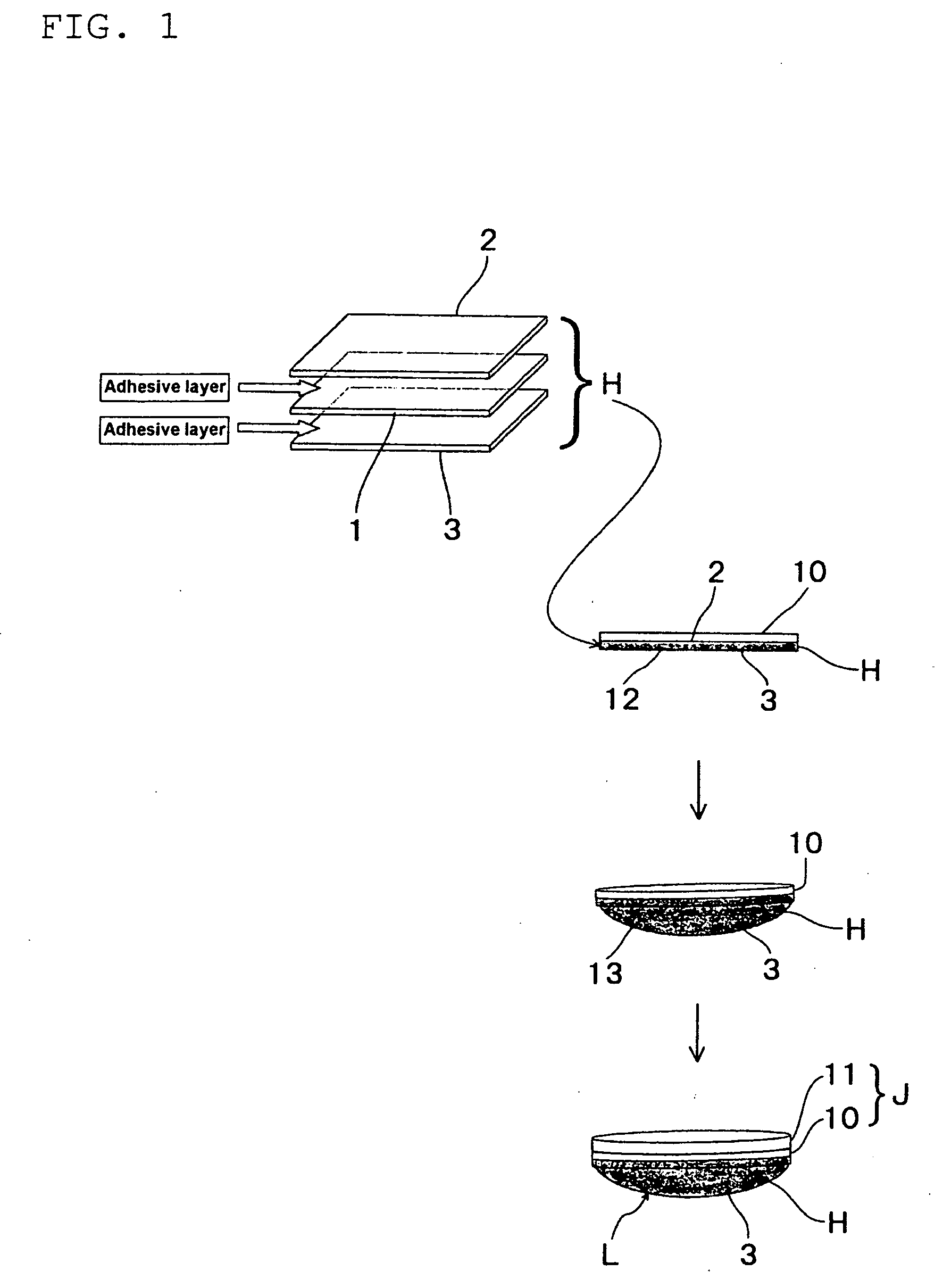Polarizing lens
a polarizing lens and lens body technology, applied in the field of polarizing lenses, can solve problems such as poor waterproofness, and achieve the effect of significantly improving waterproofness
- Summary
- Abstract
- Description
- Claims
- Application Information
AI Technical Summary
Benefits of technology
Problems solved by technology
Method used
Image
Examples
example 1
[0033]In the adhesive, triglycidyl-p-aminophenol (“Epicoat 630” manufactured by Japan Epoxy Resins Co., Ltd.) was used as the epoxy resin. As the acid anhydride, maleic anhydride (Wako Pure Chemical Industries, Ltd.) was used. The maleic anhydride was used in an amount of 105 parts by weight relative to 100 parts by weight of the epoxy resin (1.05 in terms of equivalent ratio (ratio of the acid anhydride equivalent to the epoxy equivalent)).
[0034]Then, using this adhesive, at a hardening temperature of 100° C. and a hardening time of 24 hours, the protective films 2 and 3 were adhered to the both sides of the polarizing thin film 1.
example 2
[0035]In the adhesive, polyglycol diglycidyl ether (“YED205” manufactured by Japan Epoxy Resins Co., Ltd.) was used as the epoxy resin. As the acid anhydride, maleicanhydride (Wako Pure Chemical Industries, Ltd.) was used. The maleic anhydride was used in an amount of 35 parts by weight relative to 100 parts by weight of the epoxy resin (0.5 in terms of equivalent ratio (ratio of the acid anhydride equivalent to the epoxy equivalent)).
[0036]Then, using this adhesive, at a hardening temperature of 100° C. and for a hardening time of 24 hours, the protective films 2 and 3 were adhered to the both sides of the polarizing thin film 1.
[0037]The polarizing plates H according to these Examples and Comparative Examples were subjected to a water-proof test. In Comparative Examples, as the polarizing thin film 1 and the protective films 2 and 3, the same polarizing thin film 1 and the protective films 2 and 3 as those in the above-mentioned Examples were used, and the composition and the hard...
PUM
| Property | Measurement | Unit |
|---|---|---|
| temperature | aaaaa | aaaaa |
| temperature | aaaaa | aaaaa |
| thickness | aaaaa | aaaaa |
Abstract
Description
Claims
Application Information
 Login to View More
Login to View More - R&D
- Intellectual Property
- Life Sciences
- Materials
- Tech Scout
- Unparalleled Data Quality
- Higher Quality Content
- 60% Fewer Hallucinations
Browse by: Latest US Patents, China's latest patents, Technical Efficacy Thesaurus, Application Domain, Technology Topic, Popular Technical Reports.
© 2025 PatSnap. All rights reserved.Legal|Privacy policy|Modern Slavery Act Transparency Statement|Sitemap|About US| Contact US: help@patsnap.com


